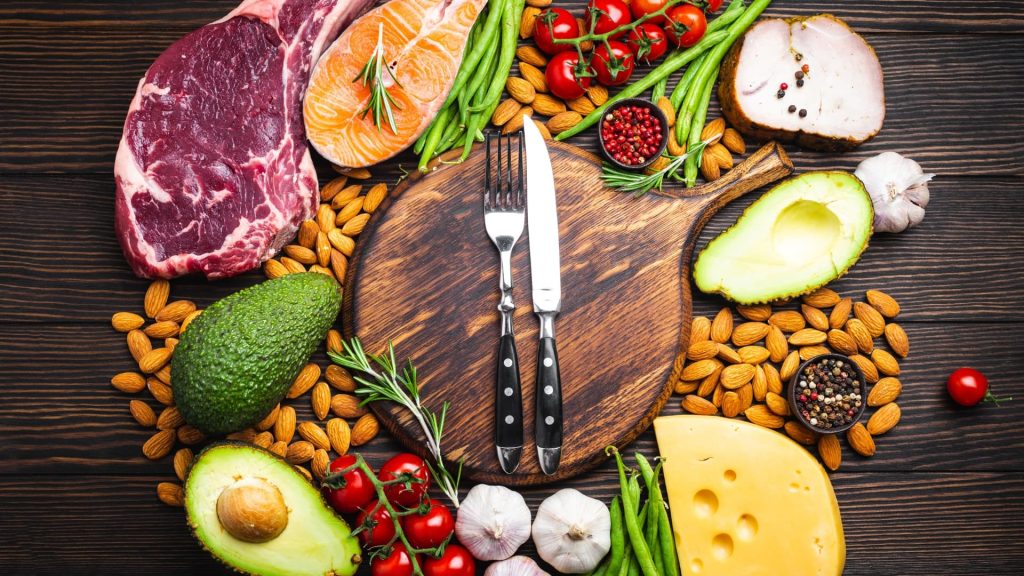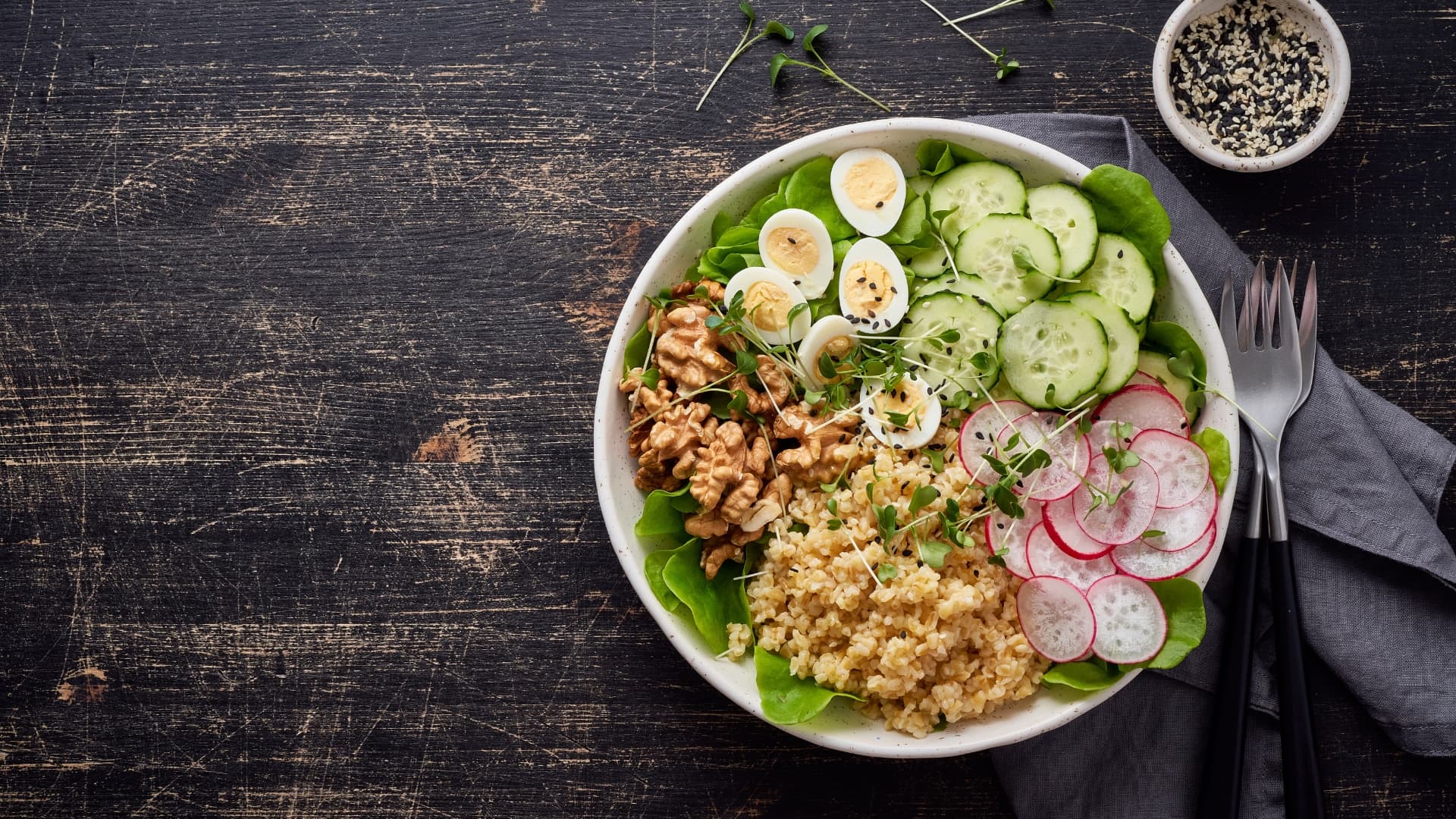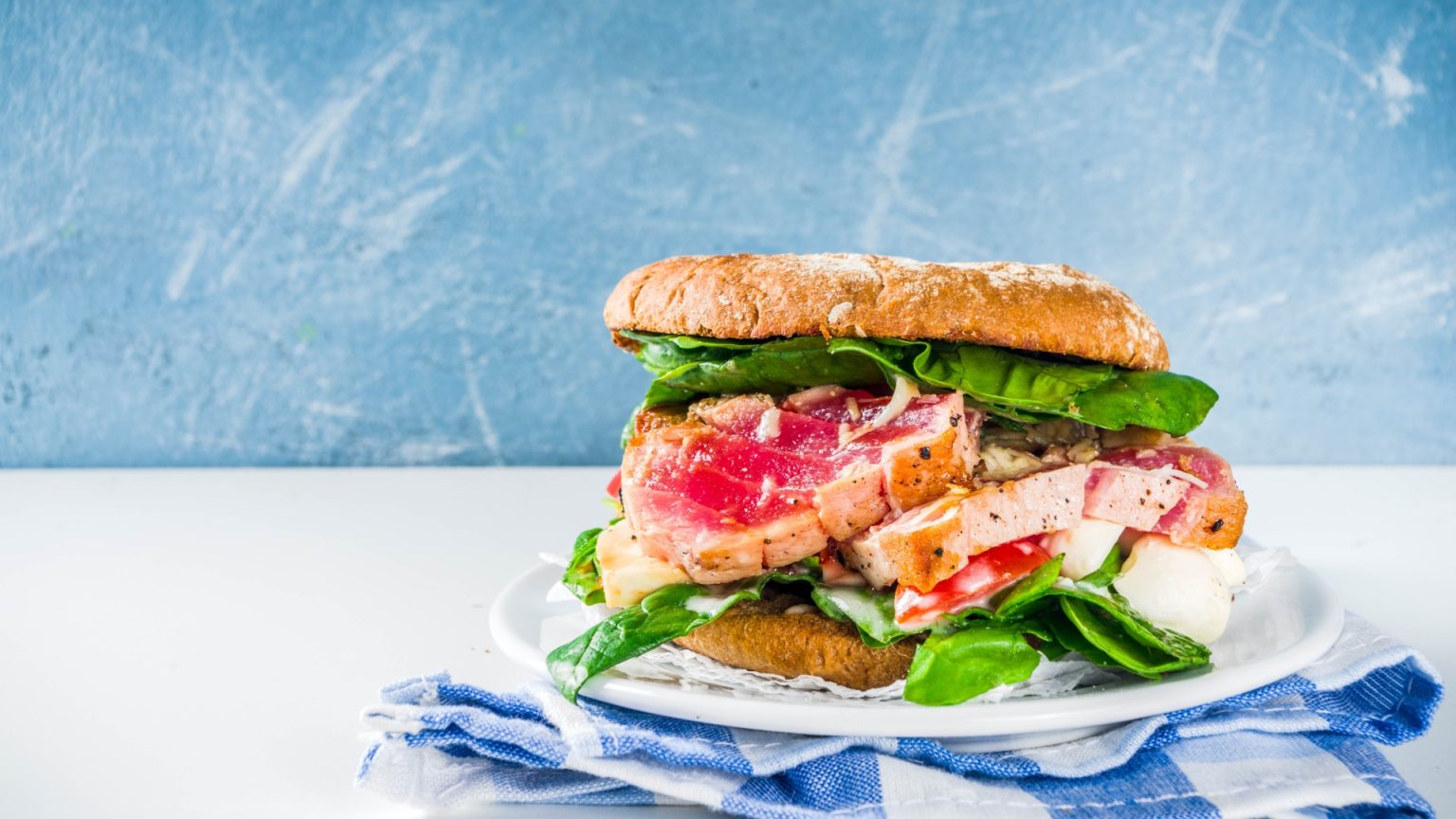If you are looking for a sustainable and healthy way of eating, you might want to consider the flexitarian diet. This plant-based diet is gaining popularity, and for a good reason. In this article, we’ll dive into what a flexitarian diet is, its benefits, and how you can get started.
Table of Contents
- Introduction: What is a flexitarian diet?
- The benefits of a flexitarian diet
- What foods are allowed on a flexitarian diet?
- What foods should you limit or avoid on a flexitarian diet?
- How to transition to a flexitarian diet
- Tips for meal planning on a flexitarian diet
- Examples of flexitarian meals
- Potential downsides of a flexitarian diet
- How to make sure you are getting enough nutrients on a flexitarian diet
- Flexitarian diet vs. other plant-based diets
- Frequently asked questions about the flexitarian diet
- Conclusion
Introduction: What is a Flexitarian Diet?
A flexitarian diet is a plant-based diet that allows for occasional consumption of meat and animal products. The term “flexitarian” is a combination of “flexible” and “vegetarian.” This diet emphasizes eating whole, nutrient-dense plant-based foods and reducing meat consumption, rather than eliminating it altogether.
Flexitarianism is becoming increasingly popular as more people recognize the health and environmental benefits of plant-based eating. It also allows for flexibility and personalization, making it a sustainable approach for many individuals.

The Benefits of a Flexitarian Diet
There are many potential benefits to adopting a flexitarian diet. Here are some of the most significant ones:
1. Improved Health
Eating a plant-based diet has been linked to numerous health benefits, including reduced risk of chronic diseases such as heart disease, diabetes, and certain cancers. Flexitarian diets are typically high in fiber, vitamins, minerals, and antioxidants, which all contribute to better overall health.
2. Weight Loss
Because flexitarian diets are high in plant-based foods, which tend to be lower in calories and higher in fiber than animal products, they may help with weight loss or weight management. Additionally, reducing meat consumption can lead to lower calorie intake, which can also contribute to weight loss.
3. Reduced Environmental Impact
Meat production is a major contributor to greenhouse gas emissions and other environmental issues. By reducing meat consumption, flexitarians can significantly decrease their carbon footprint and help mitigate climate change.
4. Affordability
Eating plant-based foods can be more affordable than consuming meat and animal products. Many plant-based foods, such as grains, beans, and vegetables, are inexpensive and widely available.
What Foods are Allowed on a Flexitarian Diet?
Flexitarian diets are primarily plant-based, emphasizing whole, nutrient-dense foods such as fruits, vegetables, legumes, whole grains, nuts, and seeds. Occasional consumption of meat, dairy, and other animal products is allowed but should be limited.
Here are some foods to include in a flexitarian diet:
- Fruits: apples, bananas, berries, oranges, mangoes, etc.
- Vegetables: leafy greens, broccoli, cauliflower, carrots, bell peppers, etc.
- Legumes: lentils, chickpeas, black beans, kidney beans, etc.
- Whole grains: quinoa, brown rice, oats, whole wheat pasta, etc.
- Nuts and seeds: almonds, cashews, chia seeds, flaxseeds, etc.
- Plant-based protein sources: tofu, tempeh, seitan, etc.
What Foods Should You Limit or Avoid on a Flexitarian Diet?
While occasional consumption of meat and animal products is allowed on a flexitarian diet, there are some foods that should be limited or avoided altogether. These include:
- Processed meats: bacon, sausages, deli meats, etc.
- High-fat animal products: cheese, butter, cream, etc.
- Fast food and junk food: burgers, fries, pizza, etc.
- Sugary drinks: soda, energy drinks, fruit juice, etc.
It’s important to note that while some animal products are allowed on a flexitarian diet, it’s still essential to choose high-quality, sustainable options. This means choosing grass-fed, free-range, and antibiotic-free meats and dairy products.

How to Transition to a Flexitarian Diet
Transitioning to a flexitarian diet can be challenging, especially if you’re used to eating a lot of meat and animal products. Here are some tips to make the transition easier:
- Start small: Begin by reducing your meat consumption gradually, rather than cutting it out completely. This will make the transition less overwhelming and help you stick to the diet long-term.
- Experiment with new plant-based foods: Try new fruits, vegetables, grains, and legumes to find ones you enjoy.
- Focus on protein: Make sure you’re getting enough protein by incorporating plant-based protein sources like tofu, tempeh, and beans into your meals.
- Plan your meals: Plan your meals in advance to make sure you’re getting a balanced diet and to avoid the temptation to eat meat or animal products when you’re short on time.
Tips for Meal Planning on a Flexitarian Diet
Meal planning is essential for a successful flexitarian diet. Here are some tips to help you plan your meals:
- Make plant-based foods the centerpiece of your meals: Start with a base of fruits, vegetables, grains, and legumes and add meat or animal products as a side dish.
- Incorporate protein into every meal: Make sure you’re getting enough protein by including tofu, tempeh, beans, or lentils in every meal.
- Use spices and herbs to add flavor: Experiment with spices and herbs to add flavor to your meals instead of relying on meat or animal products.
- Batch cook: Cook large batches of grains, legumes, or vegetables on the weekends to use throughout the week.
Examples of Flexitarian Meals
Here are some examples of flexitarian meals to give you an idea of what a day of eating on a flexitarian diet might look like:
- Breakfast: Oatmeal with almond milk, chia seeds, and sliced bananas
- Snack: Apple slices with almond butter
- Lunch: Quinoa salad with roasted vegetables, chickpeas, and a lemon vinaigrette dressing
- Snack: Hummus with carrot sticks
- Dinner: Stir-fry with tofu, broccoli, bell peppers, and brown rice
Potential Downsides of a Flexitarian Diet
While there are many benefits to a flexitarian diet, there are also some potential downsides to consider. These include:
- Difficulty getting enough protein: It can be challenging to get enough protein on a flexitarian diet, especially for athletes or people with higher protein needs.
- Social pressure: Eating a plant-based diet can be challenging in social situations, as there may not be many options available.
- The risk of nutrient deficiencies: It’s essential to make sure you’re getting enough nutrients on a flexitarian diet, especially iron, vitamin B12, and omega-3 fatty acids.
How to Make Sure You Are Getting Enough Nutrients on a Flexitarian Diet
To make sure you’re getting enough nutrients on a flexitarian diet, it’s essential to focus on nutrient-dense plant-based foods and choose high-quality animal products when consuming them. Here are some tips to ensure you’re getting enough nutrients:
- Focus on whole foods: Eating a variety of whole, plant-based foods like fruits, vegetables, legumes, and whole grains can help ensure you’re getting a wide range of nutrients.
- Incorporate fortified foods: Foods like plant-based milk, tofu, and breakfast cereals are often fortified with nutrients like calcium, vitamin D, and vitamin B12.
- Choose high-quality animal products: When consuming animal products, choose high-quality, sustainable options like grass-fed beef, wild-caught fish, and free-range eggs.
- Consider supplementation: If you’re having trouble getting enough nutrients from your diet, talk to your doctor about taking a supplement.

Flexitarian Diet vs. Other Plant-Based Diets
The flexitarian diet is similar to other plant-based diets, but there are some key differences. Here’s how the flexitarian diet compares to other popular plant-based diets:
- Vegetarian diet: A vegetarian diet eliminates all meat, poultry, and fish. A flexitarian diet allows for occasional consumption of these foods.
- Vegan diet: A vegan diet eliminates all animal products, including meat, dairy, and eggs. A flexitarian diet allows for occasional consumption of these foods.
- Mediterranean diet: The Mediterranean diet emphasizes whole, plant-based foods like fruits, vegetables, and whole grains, but also includes lean proteins like fish and poultry. A flexitarian diet is similar but allows for occasional red meat consumption.
Frequently Asked Questions about the Flexitarian Diet
- Can I still eat meat on a flexitarian diet? Yes, but meat consumption should be limited and of high-quality, sustainable options.
- Is a flexitarian diet healthy? Yes, a flexitarian diet can be a healthy and sustainable way of eating.
- How much meat can I eat on a flexitarian diet? There are no strict guidelines for how much meat is allowed on a flexitarian diet, but it should be limited to occasional consumption.
- Can I still get enough protein on a flexitarian diet? Yes, but it’s important to incorporate plant-based protein sources like beans, tofu, and tempeh into your meals.
- Will I lose weight on a flexitarian diet? It’s possible to lose weight on a flexitarian diet, especially if you focus on whole, nutrient-dense plant-based foods.
Conclusion
The flexitarian diet is a plant-based eating approach that allows for occasional consumption of meat and animal products. This sustainable way of eating has many potential health and environmental benefits, but it’s important to make sure you’re getting enough nutrients and choosing high-quality animal products when consuming them. By incorporating more plant-based foods into your diet and reducing meat consumption, you can improve your health and reduce your carbon footprint.




